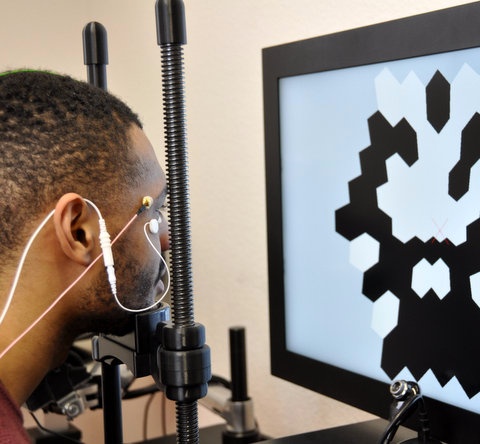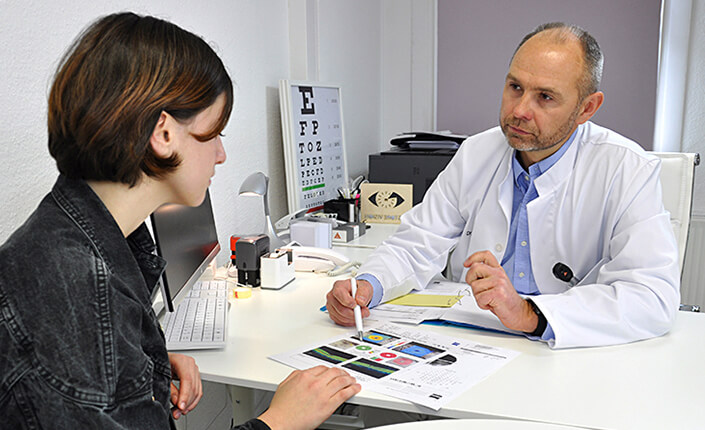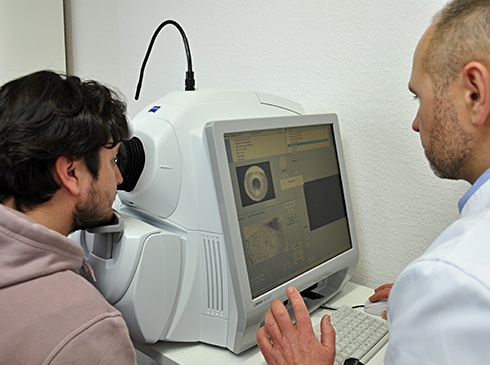
How is Retinitis
Pigmentosa diagnosed?
Retinitis pigmentosa can be diagnosed during a routine eye examination if there are abnormal, dark, pigment deposits in the retina, along with progressive complaints related to night blindness and peripheral visual-field defects.
The following examinations are important to verify and measure the extent of this condition:
• Visual field Testing to confirm typical defects in the peripheral (or side) vision;
• Optical Coherence Tomography (OCT) to confirm damage of photoreceptors (rods and cones) on the retina and to show the extent of their loss;
• Electroretinogram to confirm the dysfunction or loss of functionality of photoreceptors (i.e., rods and cones);
• Genetic Subtyping to confirm the presence of the particular gene-defects responsible for the development of retinitis pigmentosa. With the help of genetic testing, a patient can learn about the possibility of transferring any defective genes to future family generations.
Read more how RP is diagnosed and managed










